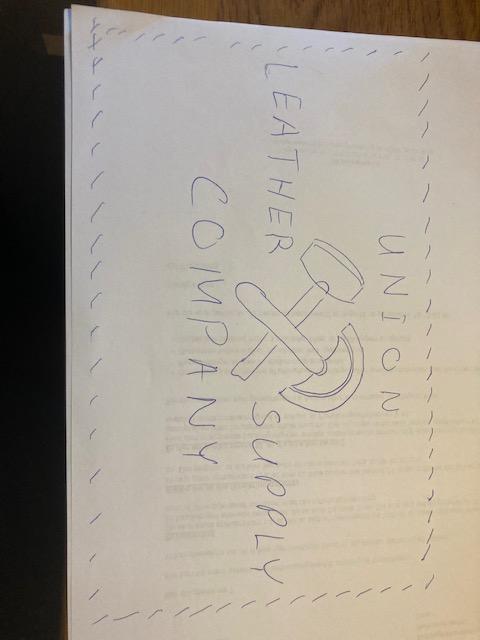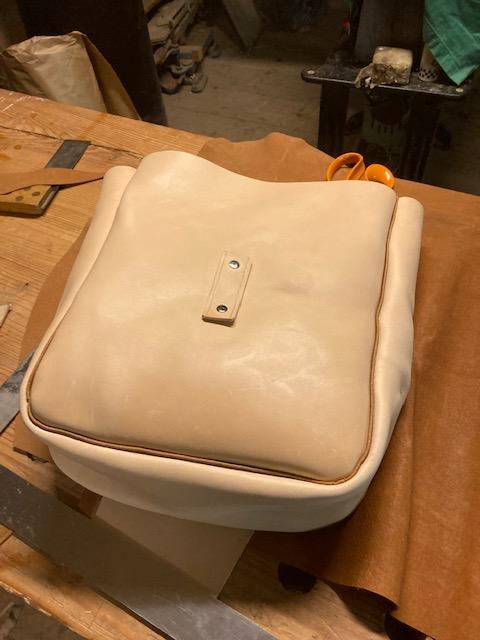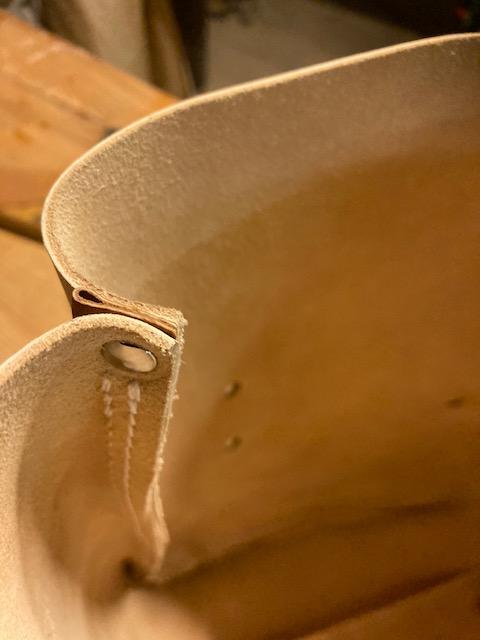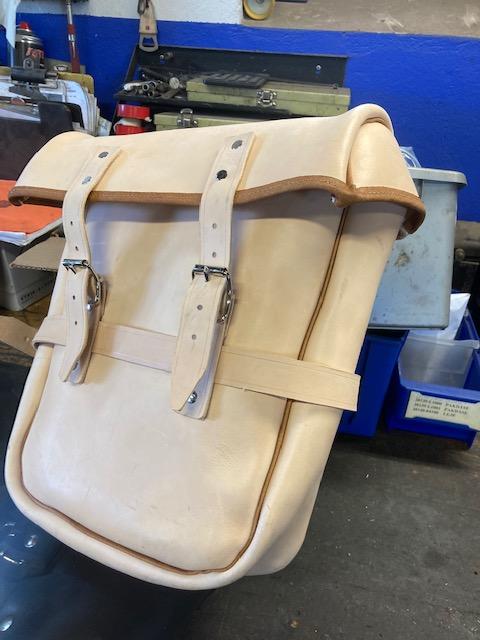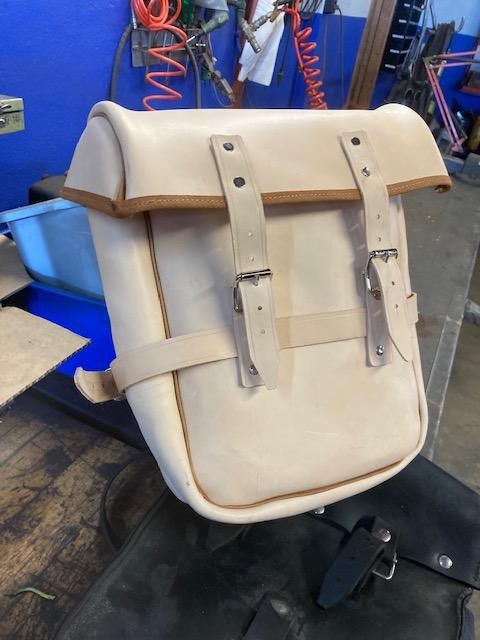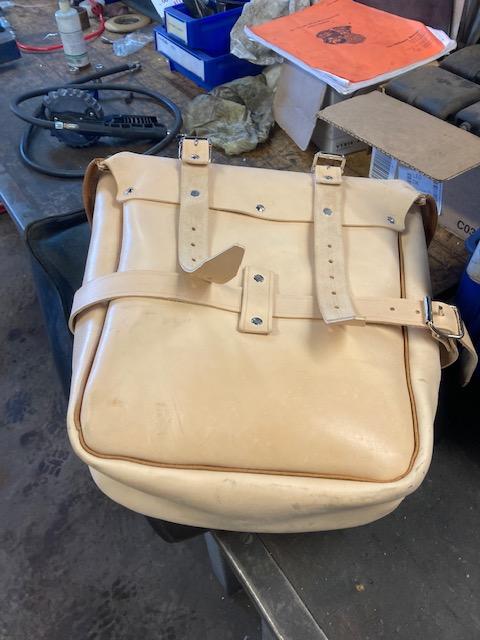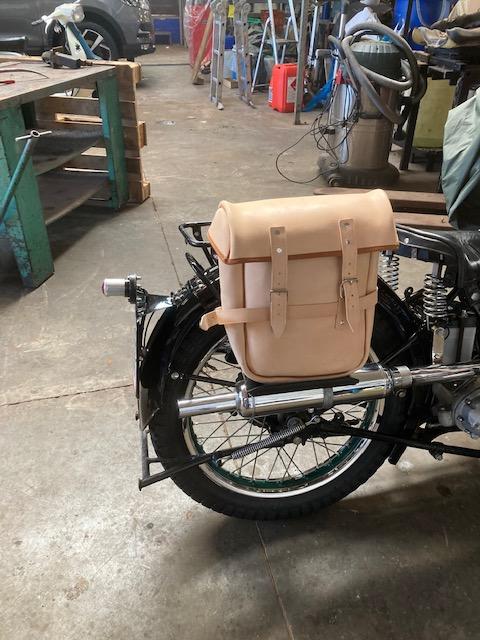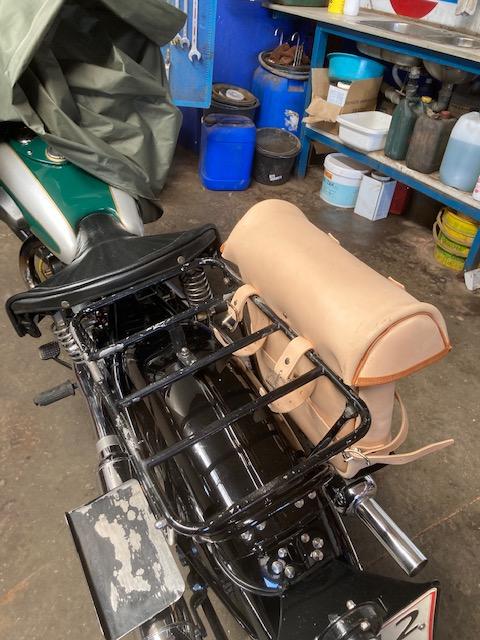-
Posts
768 -
Joined
-
Last visited
Content Type
Profiles
Forums
Events
Blogs
Gallery
Everything posted by Mulesaw
-
Leather Supply Companies - Good and Bad?
Mulesaw replied to Gulrok's topic in Leatherwork Conversation
I really like the Amopelle logos! The Frontline Leather looks like a fireman's or a police officers badge which I guess is the idea, so that makes great sense for the first responder segment. Anyone who sees it will intuitively in their mind connect it with first responders of some sort, and especially if you are in that field of work it will trigger an interest. I would guess that your company will mainly try to sell to people who are already in one way or another interested in working with leather. So by using something easily recognizable you kind of make them feel like they are members of a "secret club" (I know it sounds corny) - and I think that would give them the interest to learn more and maybe even visit you store/webshop just after seeing your logo on someone's shopping bag whom they met in the bus. If you took the crossed halfmoon knife and mallet logo, remove the A, Union goes above the logo Leather goes on the left side of the logo Supply goes to the right side of the logo Company or Estbl 2022 goes below. If you want to make a border then make a rectangular border around that looks like a hand sewn leather stitching with slanted stitches. I have made a pitiful attempt of a sketch, the proportions are wrong and the stitching line is uneven :-) That would look good in my opinion both as stamped on a piece of leather or as a logo on a business card. -
Leather Supply Companies - Good and Bad?
Mulesaw replied to Gulrok's topic in Leatherwork Conversation
I think that RockyAussie has a good point in that the font needs to be easier to read. The logo itself reminds me of a logo that is on the burger buns that you can buy in Lidl, but if the service and the products are top notch, the logo is not important for me as a customer. I would probably go for a logo that would look good on a paper bag or on a shopping bag if that makes sense? given that if people comes into you shop and buy something, a logo that might attract a curious eye while the customer walks home with it would be a cheap way of making a bit of PR. Perhaps on a background shape of a half moon knife or something else that a person with interest in leatherworking can recognize. Or the background could be a silhouette of the USA, both of those would work without colour which to me often signifies professionalism. Brgds Jonas -
That looks amazing! It makes me want to put it on and go shoot some aliens! :-) Seriously great work. The colour and surface combination is perfect.
-
Leather Supply Companies - Good and Bad?
Mulesaw replied to Gulrok's topic in Leatherwork Conversation
Good things: Ease of communications, whether you call by phone or send an email. If a mistake is made e.g. wrong length of zippers sent to the customer, then it should be very easy for the customer to call and get it sorted out. My local supplier did it and I had expected a inquisition like questioning, but instead they said, oh, we are very sorry, we made a mistake, the correct ones should be with you tomorrow. I was dumbfounded and stuttered, well, don't you want the wrong ones back or see any proof etc. - but Nope, I could keep the wrong ones and they believed me without a doubt or without demanding evidence. Pictures of the actual stuff on the website and an accurate description. Calling you if they think you are buying the wrong thing unknowingly. My shop called me when I had ordered some double prong buckles for a 2" belt. They just wanted to let me know that if I wanted to make weight lifting belts, the particular model I had ordered was not strong enough. Just a friendly call and no trying to sell me other stuff, but the exact same sort of advice that you would be glad to get if you were in the physical shop. Offering a free printed catalogue to be sent along with your purchase. Bad things: Missing items from an order, even with ease of fix it is still better to get it all correct in the first place. -
Not that there is much really old harness left where I live, but generally old horse tack has got some pretty good hardware
-
I try to do the same. I do it because I am cheap and because I believe in trying to set an example for my kids in respect of repurposing/reusing as much as practically possible. Since I repair a lot of horse tack such as horse blankets etc. the repurposed hardware often is just what I need if a blanket has got some special type of closure.
-
We had something called a "sure shot spray can" on one of the ships I worked on. That worked brilliantly, but it wasn't as cool as recycling an old spraycan. https://www.sureshotsprayer.com/ The company is still in business, but they aren't exactly cheap, but I am pretty sure that they would work with a dye for leather.
-
Sewing velcro under flap for blocks (English saddle)?
Mulesaw replied to Xanthoria's topic in Saddle Construction
@Xanthoria I would not try to glue the Velcro since to my experience many saddle parts have been so well treated with oil that the glue simply doesn't stick very well. I would use a backstitch so there is extra "thread" on the Velcro side. Also I would put the soft Velcro part on the saddle and the "hook" part under your blocks. That way you won't scratch the upper flap if you ride with only small blocks mounted. I have got 50 mm Velcro, and I think you could get by with that size, but that off course depends on how big blocks you intend to mount. Also I'd sew the Velcro one line down the middle in addition to doing it along the edges. Just so the Velcro won't accidentally be ripped off when you later remove a block. Nice looking saddle by the way brgds Jonas -
Fantastic!! Really great work.
-
Welcome Lots of help and inspiration to be found here :-) Brgds Jonas
-
What Tsunasapa said. If you take too long a piece of thread, I have found that the thread often gets sort of worn from abrasion after having passed through a lot of holes. Sometimes you can counter it by reapplying beeswax, but not much is gained by it in my opinion.
-
I'd say that your wife definitely sounds like a keeper :-) What a thoughtful gift, But that's the beauty of living a ling life with a person that you love - you know what'll make each other happy. Brgds Jonas
-
Thanks for the kind words all of you :-) And sorry for a late reply. We are currently under way from Valparaiso to Tahiti, and due to our Internet provider on board (Telenor Marine) we have been completely without any means of net based communication for 3 weeks Not just for personal use, but also for ships mail such as ordering stuff and reporting this or that. @clodhead Thanks, your stitching horse look just like it, and a great find for 40$! @KTWolf Hahaha, I know just that feeling :-) I normally stop when I manage to cut myself (which doesn't take long), and thanks :-) @Brokenolmarine Thanks, good luck with making one :-) It is a satisfying project that isn't very difficult - I opted to make some fancier joints for the stretchers compared to the plans in the book, but technically that is not necessary at all. @Samalan Thanks :-)
-
Thanks The one that I looked at for inspiration only had the front part "turned out". And it didn't have that small piece of darker skin between the main parts. I am pretty sure that it would be really difficult to turn it too. Turning this one was not super easy, but it was doable, so I am glad that I didn't move up in thickness of the leather. I hadn't thought about wetting the leather before turning it inside out, so it is quite possible that it would have looked sharper. I guess it would be OK as long as I wetted the entire bag, so I wouldn't risk a change in colour from wetted contra dry parts. I wonder if it would still be possible to do it after I have turned it. Then I could put some cardboard or thin plywood into the bag to help retain the shape while it dries. Brgds Jonas
-
Thanks Bob I hope that he will want it, otherwise I'll just see if I can sell it to someone else. Brgds Jonas
-
A friend of mine asked if I could make a saddlebag for his sons 1920 Indian Scout. he wanted it to look pretty similar to one he already had for his 1934 BSA. I took the overall measurements and made the saddlebag a little bit different using some slightly thinner leather (5 oz). The older one was something like 12 oz, and seemed too stiff and clunky to my taste. It wasn't an original saddlebag either, but one he had someone make some years ago. The reason I only made one was because we hadn't agreed on any price etc. so I told him that he could show it to his son and if he liked it I would make a second one and if he didn't like it - it would be OK with me. I hadn't treated the leather in any way, so he felt that it was very light in appearance. I gave him a couple of small samples of the same leather with some neatsfoot oil on it, so he could see that it would darken once treated. I haven't heard back from him since I have returned to the ship, so I am still not sure if he wants it or not. I had clocked my time and it took me 6 hours to make it. There is roughly 4 sq. feet of leather in the bag, and a bit of hardware.
-
Hi Tom Thanks for the heads up on the book, I'll try to see if I can locate a copy of it somewhere. learning something new (old) is always fascinating. Brgds Jonas
-
Halter from the old German book on saddlery.
Mulesaw replied to Mulesaw's topic in Saddle and Tack Accessory Items
Hi Tom Sorry for the late reply, but I have just returned to the ship, and I never take the time to sit at the computer while at home, so I have just seen your comment now. Thanks for the very kind words on the halter :-) I haven't got a clamp onboard. I have often thought about making one, but never taken/found the time to do so. So I just hold it in my hands and accepts that it takes a bit longer to sew out here. Sadly the halter didn't fit if the browband was attached. It is funny since I made it according to the measurements in the book, so I guess that Bent's head is a bit larger than a standard riding horse in those days. But the rest of the halter fits nicely. Anyway it was also mostly a project meant to occupy my mind while sailing, so I have no problems with the headband needing to be a little bit longer. I can make another one some day when I am in the mood for it :-) Brgds Jonas -
@tsunkasapa Sorry for the late reply, but I have just returned to the ship again, and I didn't find time to visit the net while at home :-) That is incredible to make 27 sets of harnesses! But I bet it is even more incredible to be pulled by a team of dogs. Brgds Jonas
-
Looks really interesting. My wife is physiotherapist, she used to do manual therapy but I think she has gravitated more towards Mulligan lately. I don't know if she has ever seen/used a belt like that, but I sure wouldn't mind trying to make one. It seems like a great project, and if it can help someone with back pains - well then it is a SUPER project.
-
Anything more than 3 lanes is scary I think. And especially if it is near a city where there are exits and merges everywhere.
-
@TomE What a cutie!! If we had a colt like that I would probably not get anything done during the day - save for watching him and feeling his soft muzzle all the time. Foals are just so adorable with that little fluffy tail and those long legs. Is the mare one of your Caspian horses?
-
@Handstitched Thanks, so far we are lucky with the weather. The pandemic is the worst obstacle for us since all the different countries have various rules and regulations. 3 hours drive to the ocean is far from someone living in Denmark where the maximum distance to the sea from any point in the country never exceeds 65 km :-) I actually dipped my toes in the Magellan Strait, when we were in Punta Arenas - just to have done it. (It was actually freezing cold). @TomE Hi Tom, I'm not on FB, so a post here would be super nice I think. I checked the Maefield Farm homepage yesterday, but there was just a lot of pretty horses, and no adorable foals :-)
-
@TomE I don't think I could part with a foal if we had one :-) A foal is just like a puppy, it makes me want to hug it and stroke it over the soft fur all day long. Maybe a small post in this part of the forum with some pictures at the end of May? (pleeeeease) @tsunkasapa I had to look it up to see what Iditarod is. A sleigh dog race would be so cool to see. Alaska is pretty high up on my list of places that I'd like to visit. @chuck123wapati I haven't been in Oakland, so It could be that they have hid the ocean pretty well over there. Normally it is a lot easier to find the sea outside of cities, being a country boy - big city traffic sort of scares me. I feel most comfortable in places where I can make a U turn if I need to or a three point turn if the road is narrow. And I find it a lot more comfortable to ask for directions out on the countryside compared to in a city.



